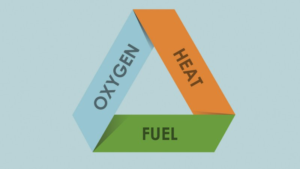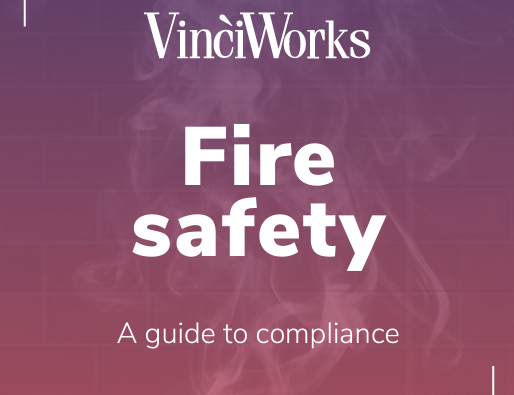Related Courses
The fire triangle consists of the three elements needed to create a fire: Heat, Fuel and Oxygen.
All three of these ingredients must be present for a fire to ignite. Removing one or more of them can prevent one altogether. The fire triangle is therefore an important tool for recognising where in your workplace a fire might break out and for working out how to minimise these risks.
Heat
High temperatures are a natural consequence of many working activities such as cooking or welding. Where this is unavoidable, it’s vital that all safety procedures are followed accurately and staff are properly trained in fire safety. Work activities generating heat should be kept far away from any sources of fuel that could help a fire spread.
The most common cause of workplace fire is electrical equipment. Fire risk assessments should take account of the problem of overheating relating to all electrics, from computers to heavy machinery. This can be minimised by making sure equipment is regularly inspected, sockets are not overloaded and all wiring is in excellent condition. Staff trained in fire safety can make sure they’re not plugging in too many devices at once, and conduct visual inspections of any equipment before each use. Damaged equipment can then be removed before it causes a hazard.
Smoking is another source of heat that could cause dangerous situations. Smoking areas should be away from the main working spaces and away from any storage points that contain potential sources of fuel.
Fuel
Any type of flammable material can act as fuel for a fire’s spread. This ranges from everyday waste associated with work such as paper, cardboard and fabric through to more specialist materials requiring expert handling.
The simplest way to break the fire triangle is to keep these materials away from sources of heat. With flammable liquids and gases, make sure they’re stored in well-maintained containers and only keep them on-site in the quantities immediately required by the work. Good housekeeping goes a long way towards minimising the outbreak and spread of fires: combustible waste should be cleared away regularly (preferably daily) and exit routes must always be kept clear from clutter or blockages.
It’s important to consider any areas where a fire could start unnoticed. Cellars and infrequently used store rooms fall under this category. These need to be kept free from flammable materials where possible. It can also help to limit access to these areas; roughly a quarter of workplace fires begin due to arson, and unstaffed areas with minimal supervision are common targets.

Oxygen
The air we breathe is around 21% oxygen and most fires require only 16% oxygen content to ignite, so this is perhaps the most difficult of the three elements of the fire triangle to control under normal circumstances. For work which requires higher concentrations of oxygen – for example, chemical processes that need pure, high pressure oxygen from a cylinder – it is extremely important that this is done in a controlled environment by properly trained professionals who are aware of the increased fire risk.
When evacuating a building during a fire, it helps if the last person to leave each area closes any windows or doors (though only if it’s safe to do so and there is sufficient time). This starves the fire of extra oxygen and hopefully slows down its growth.
Fire extinguishers work on the basis of cutting off the fire from the oxygen in the air. It’s very important to know which types of fire extinguishers tackle which types of fire, as electrical fires and oil fires, for instance, require very different treatment. Getting it wrong can make matters worse, so people should only attempt to use fire extinguishers when they have been properly trained in their use.
Using the Fire Triangle
All workplaces need a fire risk assessment by law. Identifying fire hazards is a major part of the risk assessment, so knowledge of how a fire starts can be helpful. Thinking about materials in terms of “potential fuel” or “potential sources of heat” can aid the risk assessor with deciding where changes need to be made to the working environment or building layout to make sure their workplace is as safe as possible from the damage that fire brings.


